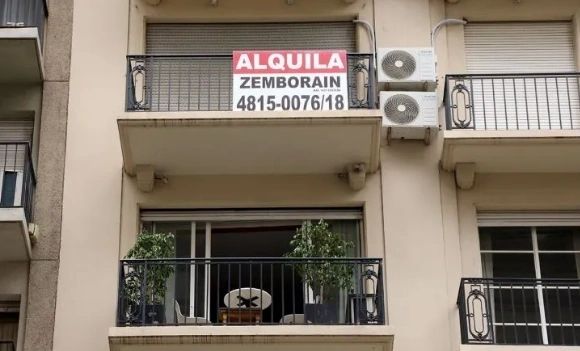BuySellBA
Administrator
Rent adjustment hits its lowest level in nearly three years - Ambito Financiero

Source:

El ajuste de alquileres marca su nivel más bajo en casi 3 años
El Índice de Contratos de Locación (ICL) muestra su menor alza en 40 meses, cuales son las causas del descenso. El mercado se reacomoda con más oferta.
July 28, 2025
The Leasehold Contract Index (LCI) is showing its lowest increase in 40 months. What are the reasons for the decline? The market is readjusting with more supply.
By Jose Luis Cieri

The ICL, which adjusts current rental agreements, marks the lowest year-on-year increase in 40 months in August 2025, a relief for tenants and a reflection of low inflation.
The dynamics of the rental market in Argentina are experiencing a momentous shift, unthinkable for many industry players months ago. The Rental Contract Index (ICL) , used to update contracts still governed by the repealed 2020 Rental Law, will apply a year-on-year adjustment of close to 55.67% in August 2025. This percentage is not only significantly lower than the peaks recorded during 2024 and much of 2023, but also represents the lowest increase in almost three and a half years, a palpable relief for thousands of tenants across the country.
The sharp and sustained decline in the ICL is a direct consequence of the abrupt inflation slowdown. The August 2025 coefficient, calculated by the Central Bank of the Argentine Republic, takes into account inflation data from a year ago, when monthly rates were still high. For example, in June and July 2024, the INDEC Consumer Price Index (CPI) stood at 4.6% and 4% respectively, figures well above the current 1.5%. This downward inertia has been consolidating for more than a year, when the ICL peaked in July 2024, exceeding 265%.
Since the beginning of 2025, the ICL has fallen by 135% , and by an impressive 210% since that peak in July 2024. To gauge the magnitude of this decline, we must go back 40 months to find an adjustment percentage lower or similar to this almost 56% of August 2025. It was in May 2022 that the ICL showed a lower value, at 53.91%. The following month, in June 2022, the adjustment was almost identical to the current one (55.97%), before climbing in July 2022 to 58.16%, also above the current figure. This scenario is being analyzed by industry experts.
Alejandro Braña , a real estate expert and member of the Buenos Aires Real Estate Association, explained that "the fundamental factor behind the drop is the abrupt decline in inflation, which, given its annual nature, is delayed in this index." The specialist gave a specific example: a tenant who was paying $300,000 until July 2025 will start paying $467,000 starting in August, an amount that will remain fixed until the end of July 2026. This adjustment of just over 55% contrasts drastically with the 265% in July 2024 and the 191% in January 2025.
The impact of this reduction in the ICL on contracts still in effect under the repealed law is, according to Braña, "clearly much smaller and has no comparison with what happened a year ago."
The possibility that the updated value of the annual contract may be higher than the market value is a reality that can lead to negotiations between tenants and landlords today.
Today, the updated value per annual contract may be convenient for some tenants, or for others, it may be higher and require negotiation with landlords or real estate agents. This was unthinkable until mid-2024, when the values became outdated and multiplied upon renewal.
Post-DNU agreements
This adjustment, Braña explained, is for annual contracts under the repealed Law 27,551. However, agreements after January 1, 2024, that chose the ICL with other periodicities also show controlled figures. Below are the August adjustments for these agreements under the new regulation following Decree 20/2023:- Quarterly Adjustment (August 2025): 9.96%.
- New value for a rent of $300,000: $329,888.
- Quarterly Adjustment (August 2025): 13.58%.
- New value for a rent of $300,000: $340,734.
- Semiannual Adjustment (August 2025): 19.23%.
- New value for a rent of $300,000: $357,687.
Regarding new contracts signed after deregulation, especially those that continue to adopt the ICL (Limited Value Index), Braña observes a "certain stability; they've left behind the surge in prices that occurred not long ago." Despite this, there are cases where the adjusted rent may be slightly above market value. Rental supply grew by 176% in Buenos Aires City , creating a much more competitive market.
Dynamic
Regarding the overall dynamics of the rental market, considerable demand remains, but with changes in supply. The Statistical Observatory of the Real Estate Association noted a significant recovery in supply since May of this year. The number of properties listed in Buenos Aires exceeded 21,000 between June and July, a significant jump from the 19,000 that was considered a ceiling. "Today we see something incredible: more than 700 apartments are listed, with prices having dropped from -40% to -5% in the last 60 days," Braña emphasized.
The rental signs are back in Buenos Aires. Apartments are no longer renting as quickly as they were under the Rental Law. Landlords rejected the regulations, and there were no units available by the end of 2023.
Current demand is "very selective" and lacks the urgency that characterized tenants until 2023, when they became desperate due to the shortage. What used to rent in 24-48 hours can now take two to three months, or even longer, depending on the location and competition.
Radiography
The drop in the ICL occurs as the rental market is transforming. The emergence of mortgage loans (although they slowed in July due to rising rates and banking conditions) is driving home purchases, according to Lisandro Cuello , a real estate expert in northern Buenos Aires.In Villa Crespo, a two-bedroom apartment starts at $850,000. In Palermo, a similar unit averages over $1,100,000 per month. Cuello explains that the availability of mortgages has led many to look for used properties or those in need of renovation, and they prefer to pay a mortgage payment rather than rent.
The most popular areas are Belgrano, Caballito, Recoleta, Palermo, Saavedra, and Núñez, sought after by families for their convenience to school activities, sports, and transportation.
When looking for an apartment, renters value a balcony and a kitchen integrated into the living room . The age of the building is secondary to the value and the potential for remodeling to create a minimalist "home." Utility bills are also key; they prefer reasonable utility bills, without too many expensive amenities.
Cuello observed a large supply of rentals at "exorbitant" prices, leading people to prioritize purchasing and taking out loans. This shift in mentality, with the goal of owning a home, is increasing supply.
The dominant tenant profile for two-bedroom apartments is a family with one or two children . However, this type also attracts groups of students willing to share expenses and space. Cuello concluded: "This diversity maintains demand, although the overall supply is broader."
www.buysellba.com

